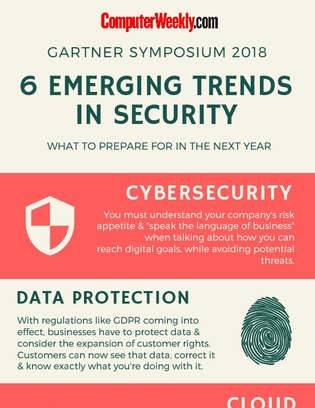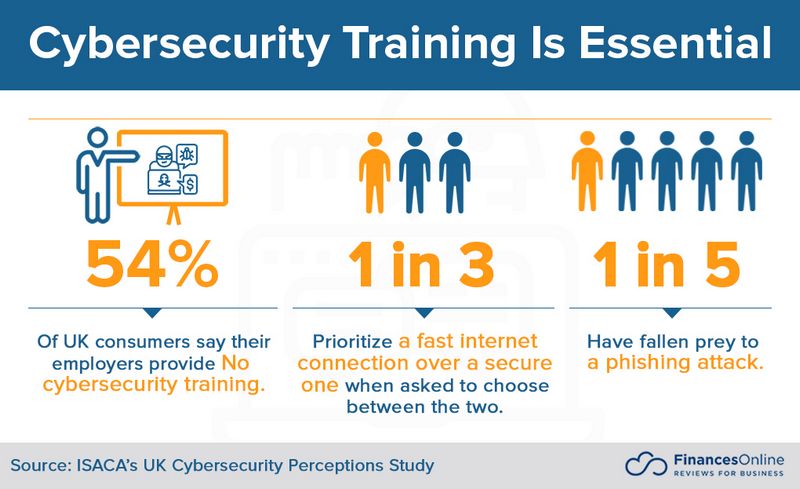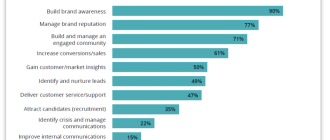
The latest trends in office security technology
In today’s rapidly evolving and interconnected world, office security has become an increasingly important concern for businesses of all sizes. With the latest advancements in technology, new trends have emerged to address the ever-changing landscape of office security. These trends are aimed at providing enhanced protection for confidential data, safeguarding physical assets, and ensuring the safety of employees and visitors alike.
One of the key trends in office security technology is the integration of artificial intelligence (AI) and machine learning algorithms. With these advanced algorithms, security systems are able to analyze vast amounts of data and identify potential threats in real-time. This allows for a proactive approach to security, with the system automatically detecting and alerting authorities to any suspicious activity.
Another important trend is the use of biometric authentication, such as fingerprint or facial recognition. By implementing these technologies, businesses are able to ensure that only authorized individuals gain access to sensitive areas or information. Biometric authentication provides a higher level of security compared to traditional methods, such as passwords or keycards, as it is extremely difficult to replicate or forge someone’s unique biometric data.
Additionally, the rise of the Internet of Things (IoT) has also had a significant impact on office security. IoT devices, such as smart locks or surveillance cameras, can be connected to a central network, allowing for remote monitoring and control. This enables businesses to have real-time visibility of their security systems and respond quickly to any incidents or breaches.
In conclusion, the latest trends in office security technology are focused on incorporating AI and machine learning, implementing biometric authentication, and leveraging IoT devices. By embracing these trends, businesses can enhance their overall security and protect themselves against the ever-evolving threats in the digital age.
Biometric Authentication Systems
In the latest trends in office security technology, biometric authentication systems have become increasingly popular for providing secure access to sensitive areas of an office. These systems use unique physical or behavioral characteristics to verify the identity of an individual.
Biometric authentication systems offer several advantages over traditional security measures such as passwords or access cards. Firstly, they provide a higher level of security as biometric traits are unique to each person and cannot be easily replicated or stolen. This ensures that only authorized individuals can access restricted areas.
Secondly, biometric authentication systems are convenient for employees. They eliminate the need for remembering complex passwords or carrying access cards, which can be easily misplaced or forgotten. Instead, individuals can simply use their fingerprint, iris scan, or facial recognition to gain access to their workspace.
These systems are also efficient for office administrators, as they can easily manage access rights and maintain a secure environment. Biometric authentication systems can be integrated with existing security systems such as CCTV cameras and alarms, providing a comprehensive and seamless security solution.
One of the challenges of implementing biometric authentication systems is ensuring the privacy and protection of individuals’ biometric data. To address this, organizations need to establish strict protocols for data storage and encryption. Additionally, regular security audits should be conducted to ensure that the biometric data is properly secured.
In conclusion, biometric authentication systems are the latest technology in office security. They provide a high level of security, convenience, and efficiency for employees and office administrators. As advancements continue to be made in this field, biometric authentication systems will likely become even more prevalent in office environments.
Cloud-Based Security Solutions
In today’s fast-paced digital world, the latest trend in office security technology revolves around cloud-based solutions. These innovative security solutions offer a wide range of benefits for businesses of all sizes.
One of the key advantages of cloud-based security solutions is their scalability. With traditional security systems, businesses often face challenges when it comes to expanding or upgrading their security infrastructure. With cloud-based solutions, however, businesses can easily scale their security resources up or down as needed, without the need for additional hardware or complicated installations.
Another important aspect of cloud-based security solutions is their accessibility. With these solutions, office security can be monitored and managed from anywhere with an internet connection. This means that businesses no longer have to rely on physical on-site security personnel or be limited to monitoring security cameras from a designated location. Instead, cloud-based solutions offer the flexibility to monitor and access security information remotely, which is especially valuable for businesses with multiple locations or remote team members.
In addition to scalability and accessibility, cloud-based security solutions also offer enhanced data protection. With data breaches becoming more prevalent, businesses need robust security measures to protect sensitive information. Cloud-based solutions provide advanced encryption and data storage protocols, ensuring that data is securely stored and protected from unauthorized access.
Furthermore, cloud-based security solutions often come with additional features, such as real-time reporting and analytics. These features provide businesses with valuable insights into their security systems, allowing them to identify potential vulnerabilities and make informed decisions to improve overall security.
In conclusion, cloud-based security solutions are the latest trend in office security technology. Offering scalability, accessibility, enhanced data protection, and additional features, these solutions are becoming increasingly popular among businesses. By embracing cloud-based security solutions, businesses can improve their security infrastructure and stay ahead of evolving security threats.
IoT Security Integration
As the latest trends in office technology continue to evolve, the integration of IoT (Internet of Things) security has become a top priority for many businesses. With the increasing number of connected devices in the workplace, ensuring the security of these devices and the data they collect is crucial.
IoT security integration involves implementing various measures to protect the interconnected devices and networks within an office environment. This can include the use of strong encryption protocols, multi-factor authentication, and secure VPN (Virtual Private Network) connections.
One of the main challenges of IoT security integration is the sheer number of devices that need to be secured. From smart speakers and thermostats to surveillance cameras and access control systems, each connected device presents a potential vulnerability.
To address this challenge, businesses are adopting centralized security management platforms that allow for the monitoring and control of all IoT devices from a single interface. These platforms provide real-time visibility and alerting capabilities, allowing IT teams to quickly respond to any potential security threats or incidents.
Another important aspect of IoT security integration is the regular updating and patching of connected devices. This is crucial as vulnerabilities in IoT devices are constantly being discovered and exploited by hackers. By keeping devices up-to-date with the latest firmware and security patches, businesses can minimize the risk of a security breach.
In conclusion, IoT security integration is an essential component of modern office technology. By implementing robust security measures and adopting centralized management platforms, businesses can better protect their interconnected devices and networks, ensuring the confidentiality and integrity of their data.
Artificial Intelligence in Office Security
In recent years, there has been a growing trend in incorporating artificial intelligence (AI) technology in office security systems. The latest advancements in AI have greatly enhanced the effectiveness and efficiency of these security measures, making them crucial for maintaining a safe and secure office environment.
AI algorithms and machine learning have revolutionized the way office security is managed. With the ability to analyze vast amounts of data in real-time, AI-powered security systems can quickly identify potential threats and take proactive measures to prevent them from escalating.
One of the key advantages of AI in office security is its ability to recognize patterns and anomalies. By continuously learning from historical data, AI algorithms can identify unusual behavior and automatically trigger alerts or initiate appropriate actions. This can help to prevent unauthorized access, detect intruders, and minimize the risk of security breaches.
Another aspect where AI has made significant improvements is facial recognition technology. By utilizing deep learning algorithms, office security systems can accurately identify individuals based on their facial features, even in challenging conditions. This not only enhances access control but also enables tracking of individuals throughout the premises, ensuring a higher level of security.
Moreover, AI-powered video surveillance systems have become highly effective in monitoring office premises. These systems can analyze video feeds in real-time, automatically detecting suspicious activities or objects. They can also recognize specific objects, such as weapons or unauthorized devices, and promptly alert security personnel. This proactive approach in monitoring and alerting adds an extra layer of security to the office environment.
In conclusion, the integration of artificial intelligence into office security systems is a significant trend in the field. The latest advancements in AI technology have revolutionized the way security is managed, enhancing the effectiveness and efficiency of office security measures. With its ability to analyze data, recognize patterns, and detect anomalies, AI has become an essential tool for ensuring a safe and secure working environment. As technology continues to evolve, we can expect further advancements in AI-powered office security systems, making our workplaces even safer.
Video Surveillance with Facial Recognition
In today’s modern office, security is a top priority. With the rapidly advancing technology, video surveillance with facial recognition has emerged as one of the latest trends in office security technology. This innovative solution combines the power of video surveillance cameras with advanced facial recognition software to enhance the overall security of the office environment.
The use of video surveillance with facial recognition in the office has several benefits. Firstly, it provides an extra layer of security by accurately identifying individuals entering the premises. This helps prevent unauthorized access and potential security breaches. Secondly, it allows for real-time monitoring and alerts in case of any suspicious activity. The system can immediately notify security personnel if someone with a criminal record or restricted access attempts to enter the office building.
To implement video surveillance with facial recognition, high-quality cameras are strategically placed in key areas throughout the office. These cameras capture and record live video footage, which is then analyzed by the facial recognition software. The software compares the captured images to an existing database of authorized personnel and alerts the security team of any mismatches or potential threats.
One of the advantages of using video surveillance with facial recognition is its ability to work in various lighting conditions and capture facial features accurately. The technology is capable of recognizing faces even in low-light environments, thanks to advanced algorithms and infrared technology. This ensures that the system remains effective and reliable at all times, regardless of the lighting conditions in the office.
Additionally, video surveillance with facial recognition can also assist in other office-related tasks, such as monitoring employee attendance and managing access control. With this technology, employers can accurately track and record employee check-ins and check-outs, eliminating the need for traditional timekeeping methods. It also allows for easy management of access control, granting or revoking permissions based on facial recognition.
| Enhanced Security | Provides an extra layer of security by accurately identifying individuals entering the premises, preventing unauthorized access. |
| Real-time Monitoring | Allows for real-time monitoring and alerts in case of any suspicious activity, notifying security personnel immediately. |
| Accurate Identification | Works in various lighting conditions and captures facial features accurately, ensuring reliable performance at all times. |
| Employee Attendance Tracking | Assists in monitoring employee attendance by accurately recording check-ins and check-outs. |
| Access Control Management | Facilitates easy management of access control by granting or revoking permissions based on facial recognition. |
In conclusion, video surveillance with facial recognition is a cutting-edge and increasingly popular technology in the office security industry. Its ability to enhance security, provide real-time monitoring, and accurately identify individuals make it an indispensable tool for any office environment. As technology continues to advance, video surveillance with facial recognition is expected to play an even more significant role in office security systems.
Access Control Systems
In today’s office environment, security is a top priority. Companies are constantly looking for the latest trends in office security technology to protect their assets and ensure the safety of their employees. One of the key components of office security is access control systems.
Access control systems are designed to regulate who has access to certain areas in an office. These systems use various methods to authenticate individuals and grant them entry. This can include keycards, biometric authentication such as fingerprint or facial recognition, and even mobile apps.
By implementing access control systems, companies can greatly enhance their office security. These systems allow for better control and monitoring of who enters and leaves the premises. They also provide an audit trail, allowing companies to track entry and exit times, and quickly identify any unauthorized access.
In addition to providing a higher level of security, access control systems also offer convenience. Employees no longer need to remember and carry keys or access codes. With keycards or mobile apps, they can simply swipe or tap to gain entry. This improves efficiency and reduces the risk of lost or stolen keys.
As technology continues to advance, access control systems are becoming more sophisticated. They are now integrated with other office security systems, such as CCTV cameras and alarm systems, creating a comprehensive security solution. These systems can also be remotely managed, allowing for easy access control administration and quick response to any security incidents.
In conclusion, access control systems are one of the latest trends in office security technology. They provide enhanced security, convenience, and integration with other security systems. By implementing these systems, companies can better protect their assets and ensure the safety of their employees.
Remote Monitoring and Management
One of the latest trends in office security technology is remote monitoring and management. This technology allows businesses to keep a close eye on their office premises and ensure the highest level of security.
With remote monitoring and management systems, office administrators can monitor their premises from anywhere in the world through the use of internet-connected devices. This not only provides convenience but also enhances the overall security of the office.
Remote monitoring and management systems typically include various features such as video surveillance, access control, and alarm systems. These features allow office administrators to remotely monitor the activities within the office and detect any potential security threats.
Additionally, remote monitoring and management technology often includes advanced analytics and reporting capabilities. This allows administrators to gain valuable insights into the security of their office and make informed decisions to improve security measures.
Furthermore, remote monitoring and management systems often integrate with other office security technologies, such as biometric systems and smart locks. This integration enhances the overall security of the office and provides a seamless user experience.
In conclusion, remote monitoring and management technology is one of the latest trends in office security. It provides businesses with the ability to monitor their office premises from anywhere in the world, enhance security measures, and make informed decisions to improve overall office security.
Mobile Device Security
In today’s office environment, technology plays a crucial role in ensuring the security of sensitive information. With the latest advancements in mobile devices, it is essential to implement robust security measures to protect against potential threats.
- Strong Passwords: One of the simplest yet effective methods for securing mobile devices is by using strong and unique passwords. Employees should be encouraged to create complex passwords that include a combination of letters, numbers, and special characters.
- Biometric authentication: Another popular method for enhancing mobile device security is the use of biometric authentication. This technology utilizes unique biological characteristics such as fingerprints or facial recognition to grant access to the device.
- Remote Wiping: In the event that a mobile device is lost or stolen, remote wiping is a useful feature that allows administrators to erase all data on the device from a remote location. This ensures that sensitive information does not fall into the wrong hands.
- Encryption: Encrypting data on mobile devices is another essential security measure. By encrypting the data, it becomes unreadable and unusable to anyone who doesn’t have the decryption key.
- Mobile Device Management (MDM) Solutions: MDM solutions provide administrators with the ability to centrally manage and control mobile devices used within an office environment. This includes features such as remote configuration, application management, and device tracking.
By implementing these mobile device security measures, offices can ensure that their sensitive information remains protected from potential threats and unauthorized access.
Employee Training for Cybersecurity
As technology continues to advance at a rapid pace, so do the latest trends in office security. One of the most important aspects of office security is ensuring that employees are well-trained in cybersecurity.
With the increasing number of cyber threats, it is crucial for employees to be aware of the potential risks and how to protect themselves and the company’s sensitive data. Training sessions on cybersecurity can help employees understand the latest threats and learn best practices to prevent a security breach.
Employee training for cybersecurity should cover a range of topics. This includes teaching employees to recognize phishing attempts, to create strong passwords, and to avoid clicking on suspicious links or downloading unknown files. It is also important to train employees on the significance of keeping their devices and software up to date, as outdated technology can make them more vulnerable to attacks.
One effective way to conduct employee training is through interactive sessions. This can involve simulated cyber attacks, where employees can experience firsthand how quickly a security breach can occur. These simulations help employees understand the value of practicing safe online behavior and the potential consequences of failing to do so.
Another important aspect of employee training for cybersecurity is to establish a culture of security in the office. This includes encouraging employees to report any suspicious activity or potential security risks. Regular communication about new threats and updates in cybersecurity can also help keep employees informed and cautious.
Investing in employee training for cybersecurity is crucial for any organization that wants to protect its sensitive data. By staying up to date with the latest trends and providing comprehensive training, companies can ensure that their employees are equipped with the knowledge and skills to safeguard the office’s security.
Data Encryption and Secure Communication
In today’s era of rapidly advancing technology, security has become a major concern for businesses. With the latest trends in office security technology, organizations are constantly looking for ways to protect their sensitive data and communications from unauthorized access.
Data encryption plays a vital role in ensuring the security of information. Encryption refers to the process of scrambling data so that it can only be read by authorized individuals with the correct decryption key. By encrypting data, businesses can prevent unauthorized access to sensitive information, even if it falls into the wrong hands.
Furthermore, secure communication systems are essential for office security. Secure communication technology aims to protect the confidentiality and integrity of data during transmission. This can be achieved through the use of secure protocols and encrypted communication channels.
One of the latest trends in data encryption and secure communication technology is end-to-end encryption. This ensures that data is encrypted from the sender’s device all the way to the intended recipient’s device. This means that even if the data is intercepted during transmission, it remains unintelligible to anyone except the authorized recipient.
Another trend is the use of secure communication apps and platforms. These apps offer features such as secure messaging, encrypted voice and video calls, and file sharing with encryption. By using these apps, businesses can ensure that their communication channels are protected from eavesdropping and unauthorized access.
In conclusion, data encryption and secure communication play a crucial role in office security. With the latest trends in technology, businesses can deploy advanced encryption algorithms and secure communication systems to safeguard their sensitive data and communications from potential threats.
Physical Security Measures
In the latest trends in office security technology, physical security measures play a crucial role in protecting the office environment. These measures include:
- Access Control Systems: Advanced access control systems use biometric technology, such as fingerprint or retina scans, to ensure that only authorized personnel can enter restricted areas of the office.
- Surveillance Cameras: High-definition surveillance cameras are equipped with features like facial recognition and motion detection, providing real-time monitoring and recording of activities within the office.
- Alarms and Sensors: Motion sensors, door alarms, and glass break detectors are installed to detect any unauthorized entry or suspicious activities, triggering immediate alerts to security personnel.
- Security Guards: Trained security personnel are stationed at key entry points and patrol the premises, providing a physical presence that deters potential threats.
- Secure Fencing and Gates: Reinforced perimeter fencing and gates with access controls prevent unauthorized access to the office premises, ensuring a secure boundary.
These physical security measures ensure that the office remains protected against various threats, including theft, vandalism, and unauthorized access. By combining the latest technologies with human resources, offices can create a robust security system that safeguards their assets and personnel.
Threat Intelligence and Risk Assessment
Security is a top concern for offices in the modern world. With the latest trends in technology, it is essential for companies to stay updated with the most advanced security measures. Threat intelligence and risk assessment play a crucial role in ensuring a safe and secure office environment.
Threat intelligence involves gathering and analyzing data to identify potential threats and vulnerabilities. This proactive approach allows companies to stay one step ahead of cybercriminals and other security risks. By utilizing threat intelligence, offices can gain valuable insights into emerging threats and take appropriate measures to prevent security breaches.
Risk assessment, on the other hand, focuses on evaluating the severity and probability of potential security incidents. By conducting a thorough risk assessment, offices can identify their vulnerabilities and prioritize them based on the level of risk. This allows them to allocate resources effectively and implement the necessary security measures to mitigate the identified risks.
Combining threat intelligence and risk assessment allows offices to develop a comprehensive security strategy. By understanding the latest threats and assessing their own vulnerabilities, companies can take a proactive approach to protect their valuable assets, sensitive data, and employees.
Furthermore, threat intelligence and risk assessment enable offices to make informed decisions regarding their security investments. By identifying the most critical threats and vulnerabilities, companies can allocate their budget to the areas that require immediate attention. This ensures that the security measures implemented align with the actual risks faced by the office.
In conclusion, threat intelligence and risk assessment are crucial components of modern office security. By leveraging the latest trends in security technology, offices can stay updated with emerging threats and implement the necessary measures to protect their assets. With a proactive approach towards security, offices can create a safe and secure environment for their employees and stakeholders.
Integration of Security Systems
One of the latest trends in office security technology is the integration of security systems. With the advancement in technology, office security systems have become more robust and complex. Integration of these systems is becoming increasingly important for organizations as it provides a seamless and efficient way to protect their assets.
Integrated security systems combine various security technologies, such as video surveillance, access control, alarm systems, and biometric systems, into a unified and interconnected network. This integration allows for real-time monitoring, centralized management, and quicker response to potential threats or incidents.
By integrating different security systems, office security becomes more effective and efficient. For example, video surveillance can be linked to access control systems, which means that access to certain areas of the office can be granted or denied based on the video feed. This not only enhances security but also streamlines operations, as employees can move freely in authorized areas without the need for constant manual interventions.
Furthermore, integrating security systems can provide valuable data insights. With the help of advanced analytics, organizations can gain actionable intelligence from their security systems. For instance, by analyzing data from video surveillance and access control systems, organizations can identify patterns and trends, detect anomalies, and proactively prevent potential security breaches.
Overall, the integration of security systems is a significant advancement in office security technology. It maximizes the effectiveness of individual security measures and provides a comprehensive approach to safeguarding the office environment. As technology continues to evolve, the integration of security systems is expected to become even more sophisticated and indispensable for ensuring the safety and security of office spaces.
Q&A:
What are the latest trends in office security technology?
The latest trends in office security technology include biometric authentication systems, smart locks, CCTV cameras with facial recognition, and cloud-based access control systems.
How do biometric authentication systems work?
Biometric authentication systems use unique physiological or behavioral characteristics, such as fingerprints, facial features, or voice patterns, to verify a person’s identity. These systems capture the biometric data and compare it against pre-registered templates to grant access.
What are the benefits of using smart locks in office security?
Smart locks provide enhanced security for office premises by eliminating the need for traditional keys. They can be controlled remotely through smartphones, allowing authorized individuals to grant or revoke access privileges easily. Smart locks also offer activity logs, allowing businesses to track entry and exit times.
How does facial recognition technology improve office security?
Facial recognition technology analyzes the unique features of a person’s face and matches it against a database of known individuals. It can help prevent unauthorized access and enables quick identification of potential security threats. Facial recognition cameras can also provide real-time alerts for recognized individuals.
What are the advantages of cloud-based access control systems?
Cloud-based access control systems offer centralized management of access permissions, making it easier to add or remove employees from the system. They provide real-time monitoring and remote access control, allowing administrators to manage security settings from anywhere. These systems also offer scalability, as additional doors or locations can be easily added.
What are some of the latest trends in office security technology?
Some of the latest trends in office security technology include biometric authentication, artificial intelligence, video analytics, access control systems, and cloud-based security solutions.







